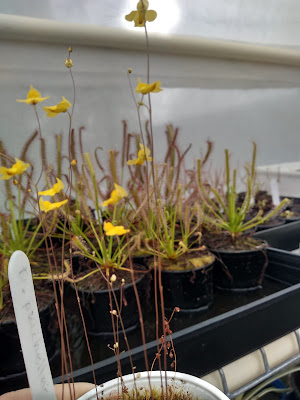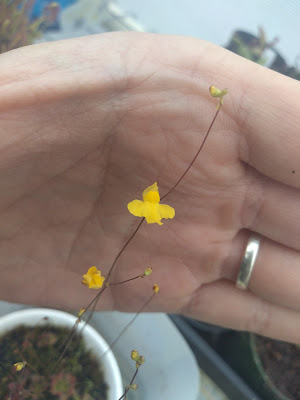I have grown pineapple sage (Salvia elegans) for years. It is such a great edible herb that smells incredible and apparently has some medicinal benefits. I have grown some good clones, and some substandard ones. They don't seem to love the climate here and usually need some protection from harsh frosts over winter.
For a few years I have been growing a particularly vigorous pineapple sage clone. It grows well, produces far more leaves than other varieties, it usually survives winter unprotected, and most importantly it has the strongest, sweetest, and most delicious pineapple scent of any pineapple sage I have grown.
One peculiarity of this clone is each spring it produces some variegated leaves. I keep wondering if it is a sport. If I took a cutting, grew it and protected it, perhaps it would produce a variegated clone. Variegated pineapple sage sounds like fun.
 |
| Variegated pineapple sage |
I take cuttings of this plant and have a few of them. My plants are all genetically identical as they are cutting grown.
As summer wears on my plant grows and I lose track of the variegated parts. After a while everything is once again green.
I was not sure if the variegated parts die off, or if they revert to green, or if something in my garden was eating them. The only way to know would be to take cuttings of a variegated branch and protect it.
 |
| Under side of variegated leaf |
Each year I kind of wish I took a cutting of a variegated branch. Every year I forget until it is too late. Every year, that is, until this year!
This year I took cuttings of variegated branches.
I took a few cuttings. Some were highly variegated, others less so. Some were entirely variegated while others had some variegated leaves and other leaves were entirely green.
 |
| Some variegation in spring |
Each of the cuttings grew well and sooner or later produced entirely green leaves.
This leads me to believe that whatever is causing this variegation, it is seasonal or environmental, and won't last.
While I would have liked a pretty and highly variegated pineapple sage, I don't think it is going to happen. Or if it will happen, it won't be by taking a cutting from my variegated branches in spring.
That's ok, I really like this clone. It has such a strong and sweet pineapple smell that I can't complain. It also survives winters here, which no other clones have done without protection, which is just incredible.
I would hate to lose this plant as it is better than any of the others I had grown.
 |
| Not much white on some |
 |
| More white on others |
 |
| Eventually they turned green |
















































